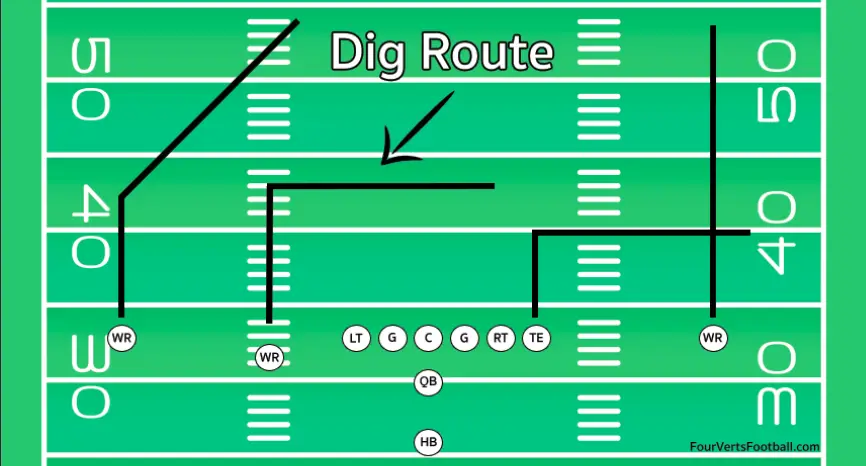We get it, football is full of tons of terminology that can be tough to keep up with. This is why we have put together this guide breaking down what an in route is in football.
An in route in football is a short route that breaks to the middle of the field. This is the opposite of an out route which is run towards the sideline. An in route can also be referred to as a dig route.
An in route can be run at different depths but in most cases, this case will not go further than ten yards down the field.
On a dig route, the wide receiver will run directly towards the defender to start the play. The receiver will have a predetermined number of steps he will take before making his break inside.
Once the receiver has taken his desired number of steps downfield he will make a sharp turn towards the center of the field.
This sharp turn should allow the receiver to achieve some separation from the defender.
The receiver will then run parallel to the line of scrimmage for the rest of the play. The quarterback may throw the ball to the receiver at any point after he makes his cut towards the middle of the field.
What To Know About Dig Routes
Now that you know what a dig route is, it’s time to break down the key facts you need to know about using this route in a football game.
Typically Used In Short Yardage Situations
One thing you should know about dig routes is that they are usually utilized when a team is trying to pick up a small amount of yardage.
This is especially true in third-down situations in which a team is trying to get past the first down marker. Dig routes will often be run one yard deeper than the first down marker.
This means if the quarterback is able to get them the ball at any point after making their break they should be far enough down the field for a first down.
Wide receivers in the NFL are usually able to get open on a dig route if they are in 1 on 1 coverage. This makes the dig route a great option for picking up small amounts of yardage.
Cross Route Concepts
Another interesting fact about dig routes is that they are key to crossing route concepts. Crossing routes are routes run by wide receivers that involve them travelling in opposite directions.
For example, if a player on the right side of the field runs a dig route and a receiver on the left side runs a dig these two players will be running towards one another.
As they pass each other in the middle of the field the defenders can get caught up in the crowd. This is also referred to as a pick play and often creates a large amount of separation for one of the wide receivers.
Often 2nd Or 3rd Read
It is also worth mentioning that dig routes are often the second or third read on a passing play. This means that the quarterback may look at one or two other receivers before looking at the one running the dig route.
One reason for this is because dig routes can be thrown to at several points during the play. Routes such as a hook require the quarterback to throw the ball right as the receiver makes his cut.
When running a dig the receiver can be thrown to at any point as he runs towards the sideline. This means the quarterback could look at an option or two downfield before throwing the safe pass to the dig route receiver.
If you are looking to learn more about receiver routes check out our guide to wheel routes and fades.

